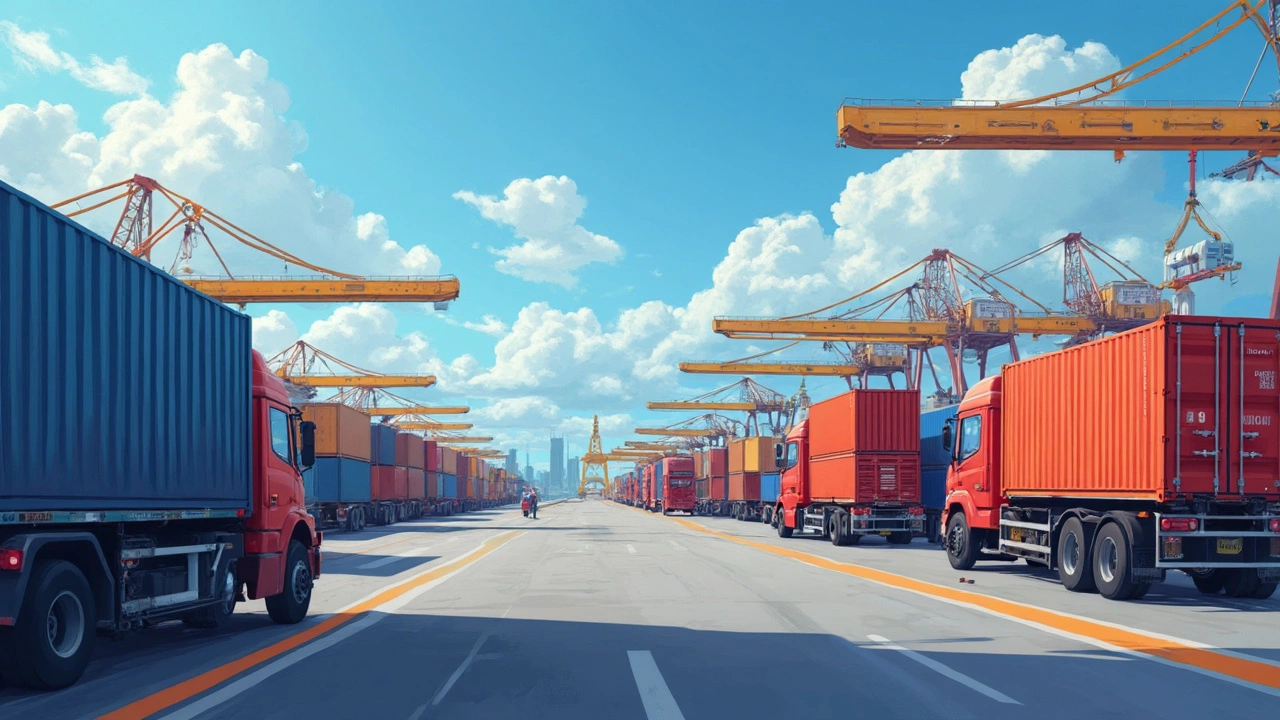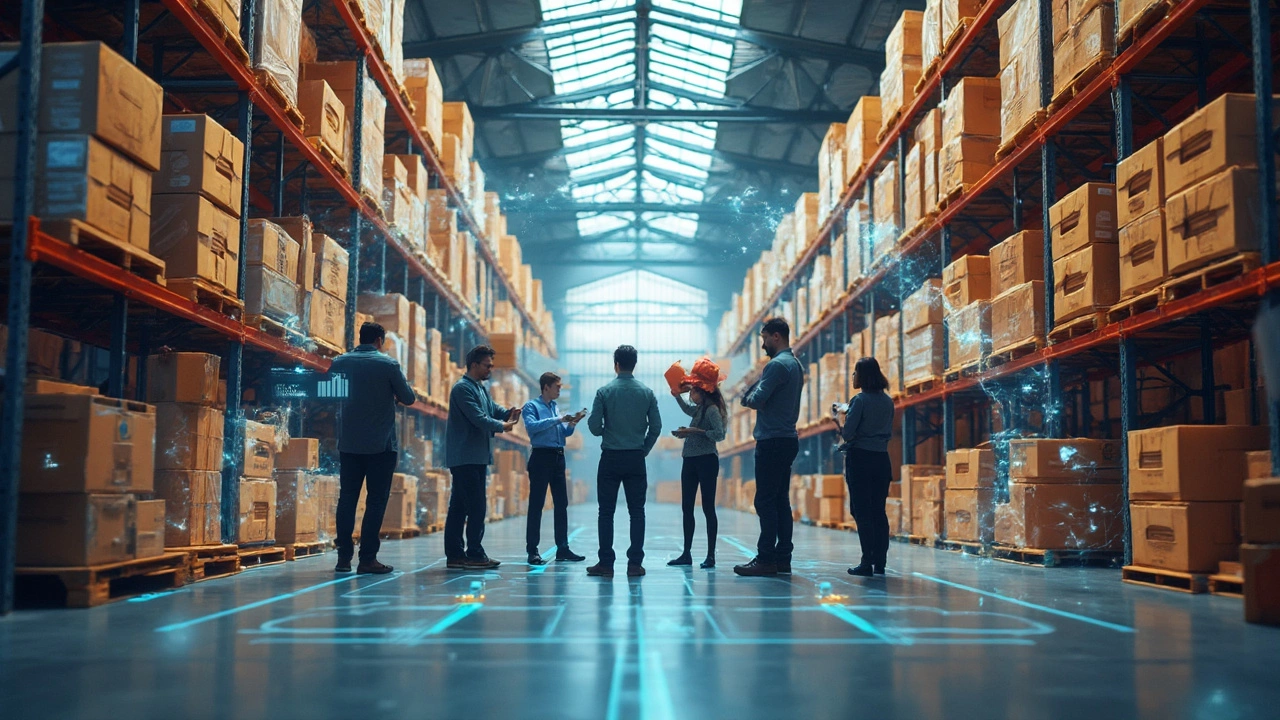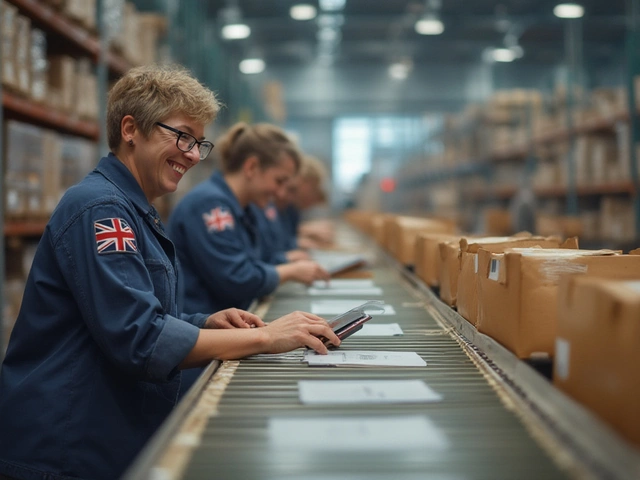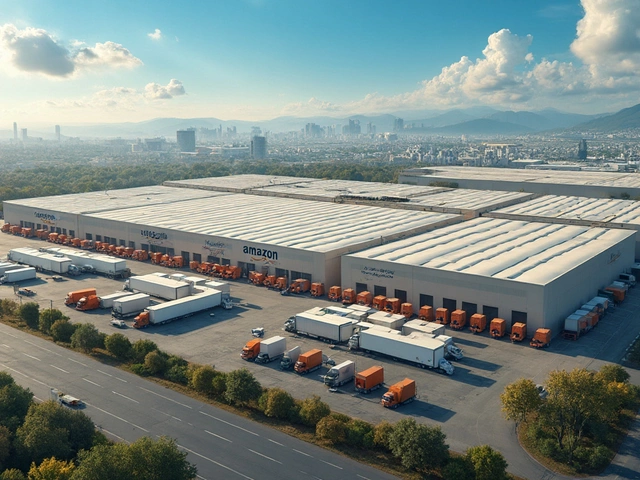Ever wondered how your online order magically arrives at your doorstep so swiftly? That's the magic of a logistics system at work. But it isn't all smoke and mirrors; it's a well-oiled machine thanks to advanced logistics software. This system can streamline everything from warehousing, inventory management, to tracking deliveries in real-time.
Imagine a large retail company. It relies on a logistics system to keep shelves stocked and customers happy. The system connects various dots: suppliers, transportation, warehouses, and even the end customer. All parties stay informed and on the same page through the power of real-time data, ensuring fewer hiccups along the way.
- Introduction to Logistics Systems
- Key Components of a Logistics System
- How Logistics Software Optimizes Processes
- Benefits of Implementing Logistics Systems
- Future Trends in Logistics Technology
Introduction to Logistics Systems
Let's get straight to the point. A logistics system is what makes the entire supply chain tick, from the moment a product is made to the time it reaches your hands. It's like the backbone of any operation that involves moving goods, whether it's for a small business or a multinational corporation.
So, what's inside this logistical marvel? At its core, it typically consists of software that manages, plans, and controls the movement of goods. Think of it as a control center—where everything is coordinated to ensure efficiency and speed. This system employs various tools and techniques designed to handle complex tasks like warehousing, inventory monitoring, and even transportation schedules.
Core Components
There are a few key components that make up an effective logistics system:
- Inventory Management: Keeping track of stock levels and product locations is crucial. Good logistics software will automatically update inventory statuses, saving businesses from costly errors.
- Transportation Management: This involves choosing the best routes, modes of transport, and managing logistics costs.
- Order Fulfillment: Ensures that customer orders are completed accurately and on time, from the picking and packing to delivering.
- Warehouse Operations: Efficient use of storage space ensures quicker access to goods and helps reduce overhead costs.
Automation in Logistics Systems
Automation plays a big role here. With the help of robots and machine learning, many logistics systems today can predict demand, optimize routes, and even carry out repetitive tasks, freeing up human resources for more critical decision-making processes.
And here's the kicker: with real-time data analytics, businesses can react to changes faster than ever. For instance, if a shipment is delayed, the system immediately signals this delay to relevant parts of the supply chain, enabling them to make timely decisions to keep everything running smoothly.
Why It Matters
The need for effective logistics systems is growing rapidly. According to a study by ResearchAndMarkets.com, the global logistics software market is expected to hit $18 billion by 2028, driven by advancements in technology and increasing demand for fast, reliable shipping solutions.
Key Components of a Logistics System
Diving deeper into the world of logistics systems, it's clear that they are a complex web of interconnected parts. Without these, the smooth delivery of goods would be pure chaos. So, what really makes up a solid logistics system?
Transportation Management
This is the backbone of any logistics system. Transportation management focuses on the movement of goods, ensuring they reach the correct destination swiftly and safely. It includes selecting carriers, route optimization, and freight auditing. With smart logistics software, companies can track every shipment in real-time, reducing delays and improving delivery accuracy.
Warehouse Management
Warehouses aren't just big buildings filled with shelf upon shelf of products. Modern logistics systems integrate warehouse management to streamline storage, sorting, and retrieval of goods. This part of the system often involves automation for inventory counts, saving time and reducing human error.
Inventory Management
Keeping track of stock levels is crucial. A logistics system with inventory management capabilities ensures companies know exactly how much product they have, where it's stored, and when it's time to reorder. This minimizes overstocking or stockouts, which in turn saves money and keeps operations smooth.
Order Processing
From the moment a customer clicks 'buy', the logistics system is at work. Order processing is where everything comes together. It involves verifying order details, invoicing, picking, packing, and preparing shipments. Quick and efficient order processing ensures faster delivery times and happier customers.
Data Analytics and Reporting
A robust logistics system doesn't just manage operations; it also provides valuable insights. With data analytics, companies can spot trends, monitor performance, and make informed decisions about their supply chain. Reports can show where improvements are needed, ultimately driving efficiency and cutting costs.
| Component | Primary Function |
|---|---|
| Transportation Management | Optimizing routes and managing shipping |
| Warehouse Management | Efficient storage and retrieval |
| Inventory Management | Tracking stock levels accurately |
| Order Processing | Coordinating customer orders to fulfillment |
| Data Analytics | Providing insights and reporting |
So, when you think of a logistics system, remember it's not just one thing but a fusion of multiple key components working in tandem. Together, they keep the wheels of commerce turning and ensure your packages reach you right on time.

How Logistics Software Optimizes Processes
Logistics software is all about making chaos look easy. It's like the brain behind the operation, helping businesses get things from point A to B without breaking a sweat. But how does it pull this off?
Streamlined Communication
First up is communication. With logistics software, everyone involved in the supply chain stays in the loop. This means suppliers, truck drivers, and warehouse managers can all sing from the same hymn sheet. No more mixed messages or lost emails.
Inventory Management
Then there's inventory control. With the right logistics system, you can track inventory levels in real-time. This means you'll always know when it's time to reorder and can reduce the chances of holding excess stock. Handy, right?
"Our logistics software has reduced our shipping errors by 30% and increased efficiency across the board," says John Smith, CEO of Shipping Experts Ltd.
Route Optimization
Transportation is another biggie. Logistics software does the heavy lifting by finding the best routes, reducing fuel costs, and shrinking delivery times. This way, drivers aren’t aimlessly wandering—you save money, they save time.
Real-Time Tracking
Real-time tracking is another ace up its sleeve. It might sound fancy, but it just means you can see where your goods are at any given moment. This makes both companies and customers happy campers.
Check out the typical improvements you might see using logistics software:
| Feature | Improvement |
|---|---|
| Inventory Accuracy | 15% Boost |
| Reduction in Delays | 20% Cut |
| Operational Costs | 25% Decrease |
So, why should you care about all this? Well, optimizing logistics processes isn't just about making things faster or cheaper—although those are nice perks. It's about creating a smooth operation that ultimately keeps customers satisfied and coming back for more.
Benefits of Implementing Logistics Systems
Investing in a logistics system isn't just about keeping up with the Joneses in the business world. There are concrete benefits that can directly affect your bottom line and customer satisfaction.
Enhanced Efficiency and Speed
One of the most significant perks is the boost in efficiency. With logistics software, businesses can automate routine tasks like inventory checks and order processing. This automation significantly reduces the time spent on manual labor, allowing your team to focus on more critical tasks. It means faster order processing and delivery times, which is a win for both you and your customers.
Cost Savings
Implementing logistics software can also lead to substantial cost savings. Automation reduces errors, which can be costly regarding time and resources. Additionally, better route planning and fuel management in transportation logistics reduce operational costs. Businesses often see a reduction in inventory carrying costs due to optimized stock levels.
Improved Customer Satisfaction
Happy customers are the goal, right? Logistics systems facilitate better communication and tracking abilities, which means customers stay informed about their orders. Real-time tracking gives them peace of mind knowing exactly when their order will arrive. It's no surprise that companies with sophisticated logistics systems often report higher customer satisfaction rates.
Data-Driven Decisions
With a logistics system in place, you're swimming in data. From delivery routes to stock levels, the data gathered can be analyzed to make informed business decisions. This data-driven approach helps identify trends, allowing you to adjust operations proactively, maintain inventory levels efficiently, and predict future needs more accurately.
| Benefit | Impact |
|---|---|
| Efficiency | 30% faster order processing |
| Cost Savings | 15% reduction in operational costs |
| Customer Satisfaction | 20% increase in delivery punctuality |
Ultimately, embracing a logistics system means setting your business up for long-term success. It’s not just about keeping things ticking over today, but about future-proofing your operations for whatever comes next.

Future Trends in Logistics Technology
The world of logistics systems is continually evolving, and staying updated is crucial. A major trend on the horizon is the increased use of automation. Imagine warehouses buzzing with autonomous robots that handle inventory without breaking a sweat. It's no longer science fiction; companies are investing in this to boost efficiency.
Logistics software is getting smarter with AI. Artificial Intelligence helps in predicting demand more accurately, so companies can manage supply much better. Who wouldn’t want to avoid overstocking or understocking?
Internet of Things (IoT) Integration
The IoT is like the nervous system of logistics, connecting everything. IoT sensors can track goods in real-time, offering insights into conditions like temperature or humidity. It’s especially valuable for delicate goods that need specific handling.
Blockchain Technology
Trust issues in supply chains? Blockchain could be the answer. This technology offers a transparent ledger, making every transaction visible and verifiable, not forgetting the added layer of security it brings to the table.
Eco-Friendly Practices
As the world becomes more conscious about the environment, logistics is shifting towards greener practices. Expect to see more electric vehicles and routes optimized by logistics systems to reduce carbon footprints.
Augmented Reality (AR)
If you've ever poked around in apps using AR, think about warehouse staff using glasses that overlay information about where to find items or how to stack products. It's like having a guide who knows everything about the warehouse.
These trends aren’t just about keeping up with technology; they’re about staying competitive and responsible in a world that’s increasingly demanding smarter and more sustainable solutions.





